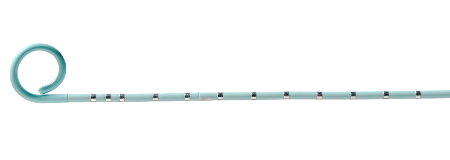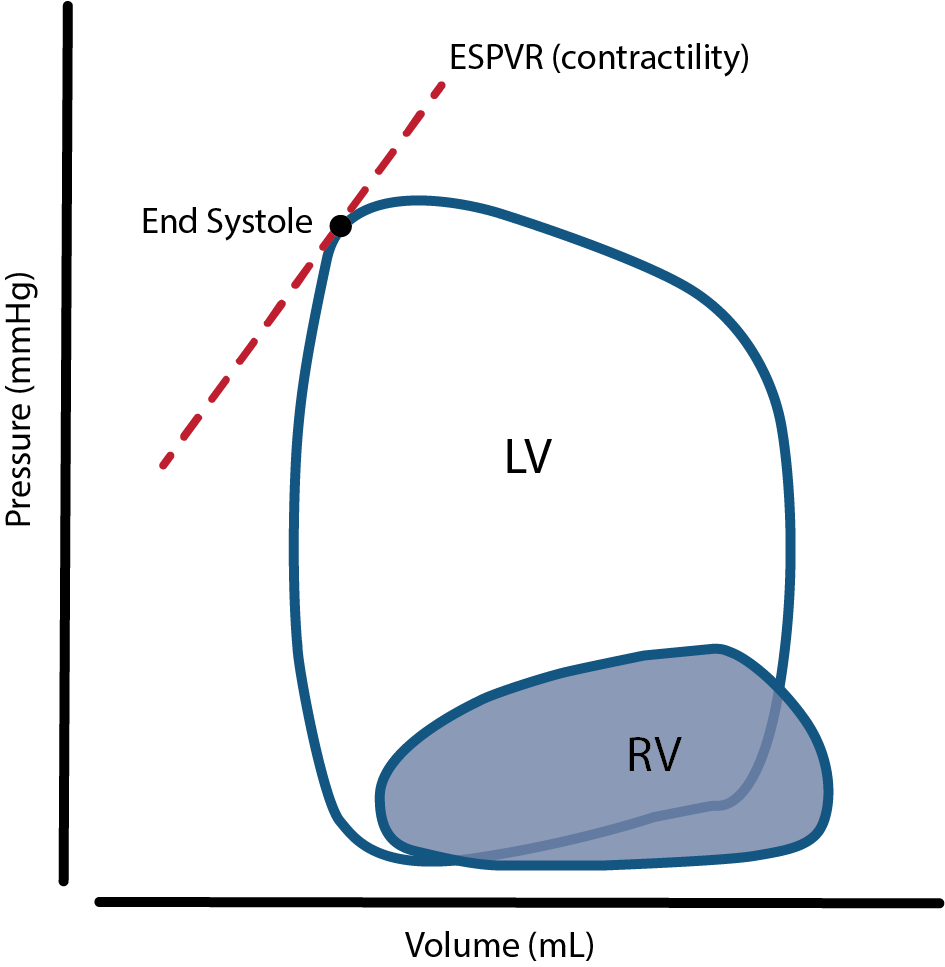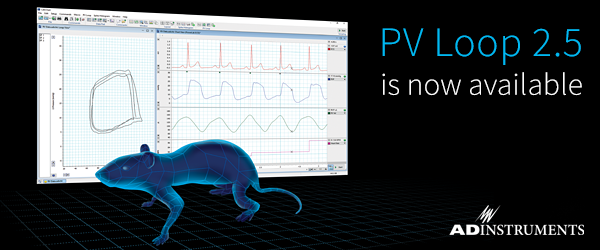Are you a cardiovascular researcher? Find out why you should consider studying ventricular pressure-volume (PV) loops - the gold standard for measuring direct, real-time cardiac function.
Why study PV Loops?
Pressure-volume loops are the gold standard for measuring direct, real-time cardiac function and are generated by plotting ventricular pressure against ventricular volume over a complete cardiac cycle. The biggest advantage of studying ventricular pressure-volume (PV) loops is the ability to determine the contractility of the heart independent of preload and afterload.

A Small Animal PV Catheter (Millar)
One of the main methods for acquiring pressure-volume data is by inserting a PV conductance catheter into the left or right ventricle and measuring changes in pressure and conductance across the electrode - the latter of which can be converted to volume using Baan’s equation.
For more information about how conductance catheters work, check out our webinar on understanding ventricular pressure-volume catheter calibrations and experimental design.
Related: Importance of PV Catheter Calibration in Admittance and Conductance Systems »
In the past, the left ventricle (LV) has been paid more attention to than the right ventricle (RV), as the RV is less prone to dysfunction and valvular diseases. However, there is a growing interest in the area of RV dysfunction, as it can lead to a number of potentially fatal diseases, such as pulmonary hypertension (PH). More importantly, analysis of RV PV loops can give information on disease severity, prognosis and response to therapies in patients with PH.
Analyzing PV Loop data - The problem with right ventricular PV loops
Analyzing PV loop data is extremely powerful, as it provides both qualitative and quantitative measurements of hemodynamics and cardiac function.
Most PV loop analysis software use algorithms based on the geometry of typical left ventricular PV loops when determining parameters such as end-systole and the end-systolic pressure-volume relationship (ESPVR) - a function of myocardial contractility.
However, the LV and RV are not the same, and neither are their associated PV loops. Left ventricular PV loops tend to have a more defined cylindrical shape, whereas right ventricular PV loops tend to be more triangular due to structural and functional differences between the two ventricles.

Schematic of a typical left ventricular (LV) and right ventricular (RV) pressure-volume.
The non-rectangular shape of a typical RV loop can make it difficult to identify the end-systolic point, which leads to increased uncertainty when calculating the ESPVR.
So, to help solve this issue, our latest release of LabChart’s PV Loop Analysis Module includes TWO new algorithms designed to give you improved, automatic detection of end-systole for both right and left ventricular PV loops, and in situations where your PV loop may take on a more 'triangular' shape.
LabChart PV Loop Module: Version 2.5
LabChart’s latest version of the PV Loop Module is designed to give you precise and accurate measurements of right ventricular contractility in healthy and diseased RV models such as pulmonary hypertension and includes new features specifically designed for measuring right ventricular contractility in small and large animal models.
In version 2.5, we have added two new algorithms for detecting end-systole in both right and left ventricular PV loops, and in situations where your PV loop may take on a more 'triangular' shape.
More specifically, version 2.5 includes:
- New single-beat, end-systolic detection method called ‘Sinusoidal pressure fit’
- Single-beat ESPVR and Piso (max pressure of an isovolumic beat) added into the hemodynamics table
- New ‘Loop tangent fit’ method for calculating ESPVR and end-systolic points from multiple beats during occlusions.
Top Tip: The new ‘Sinusoidal pressure fit’ and ‘Loop tangent fit’ methods are particularly useful for right ventricle measurements and other situations where the PV loop has a ‘triangular’ shape.
We hope that these new algorithms and features will help to make your PV loop analysis more streamlined and problem-free, letting you focus on what's important - your research.
To download the PV Loop Module, head to LabChart's Feature Manager, or go to our website: PV Loop 2.5 for Windows.. Please note that PV Loop 2.5 is only compatible with LabChart v8.1.13or later.
Enjoy!
The LabChart Team
Helpful resources:
Understanding ventricular pressure-volume catheter calibrations and experimental design (webinar)
Surgical Instruction Video Series: Pressure Volume (PV) and Invasive Pressure
Expert tips for measuring PV loops in mice
Pressure-volume catheter placement in the left ventricle – Carotid vs. Apical approach
Optimizing Pressure-Volume Recordings
